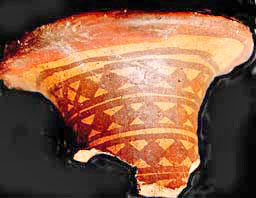|

by Gary R. Ziegler
from
AdventureSpecialists Website
|
 Gary Ziegler is an archaeologist, mountaineer and explorer who has
spent a lifetime studying the Incas in remote regions of Peru. Gary Ziegler is an archaeologist, mountaineer and explorer who has
spent a lifetime studying the Incas in remote regions of Peru.
He is
co-owner of Adventure Specialists, a Colorado ranch based adventure
tour operation that runs educational treks, horse trips and research
expeditions in Colorado, Peru and Mexico's Copper Canyon.
His
expeditions have located the important Inca sites of Corihuayrachina,
Cota Cota and Llactapata.
He is a Fellow of The Royal Geographical
Society, The Explorers Club and a sometime lecturer at Colorado
College. He can be contacted at:
|
This short non-academic
summary of Inca history originally appeared in the December 2005
issue of Dig Magazine, a publication of Archaeology Magazine
designed for kids. Simplified in description and language, I present
it as a quick introduction to the Inca for those who have not yet
taken or may not take the leap into detailed Inca studies.
The Inca
represent an incredible human accomplishment, possibly the most
organized advanced state of the ancient new world since Homo Erectus
began walking upright. Sit vis nobiscum GZ

The construction of Machu Picchu was likely started by order of the
Inca emperor Pachacuti, earth shaker, sometime during the mid-15th
century. Inca legend relates that Pachacuti ordered the construction
of Machu Picchu to celebrate the defeat of a powerful rival ethnic
group called the Chancas.
The Inca Empire grew huge in amazingly short time, less than100
years, from a small area in south central Peru to a vast region
encompassing all of modern day Bolivia, Peru, Ecuador and parts of
what is now Colombia, Argentina and Chile. The expansion and
development of the Inca into one of the world's great civilizations
during such a short time remains one of the mysteries modern science
has yet to solve.
The Inca called their empire the Land of the Four Quarters,
Tahuantinsuyu. They considered their capital, Cusco to be the
geographical/spiritual center or navel of the Inca universe. Ancient
people of the Andes mountains gave great importance to observation
and reverence of the night sky along with other natural features,
rivers and mountains they called apus. The edge of our galaxy, the
Milky Way, known to the Inca as the Celestial River or Mayu , is
very prominent in South America. The Inca may have adopted the four
quarters from the division of the night sky into quarters suggested
by positioning of the Milky Way.
The Inca, like Romans of the Old World, were inheritors of several
thousand years of human cultural development, traditions and
technological evolution. The Inca were masters of using and
improving upon what they had learned from earlier peoples. They are
best known for amazing feats of engineering, management, road
building and astonishing architectural achievements like Machu
Picchu, accomplished with only stone, wood and bronze tools.
Through very efficient organization, they effectively managed vast
subject populations, agricultural seasons, food distribution,
storage, building projects and moving large armies of workers and
soldiers without the aid of a written language. Their greatest
achievement was the expansion of a small highland state into what
may have been the largest empire in the world at the time.

Work on the magnificent site continued until it was
abandoned around
the arrival of the European conquistadors in Peru in 1532. Machu
Picchu, like many Inca projects, was never completed.
The empire came to a tragic end when small pox and other diseases
killed the Emperor Huayna Capac and an estimated 2/3 of the
population during the years 1526-27. In 1520, a Spanish fleet
arrived at the Spanish colony at Panama carrying diseases from
Europe previously unknown to the Americas.
Before the Spanish
arrived in Peru in 1532, these diseases had spread, eventually
arriving to destroy the carefully organized Inca state. When the
Europeans arrived, the empire had fallen into a devastating civil
war over who would wear the crown of the Inca ruler. Machu Picchu
was probably abandoned at this time.
|

Above:
A fragment of Kilke transitional pottery found in a
burial tomb on a mountain side near Machu Picchu. The
early Inca may have occupied the region long before
construction of Machu Picchu began
Right:
The Intihuatana stone at Machu Picchu seen during the
June solstice sunrise. State Inca religion at the site
focused upon sun and mountain worship. This important
shrine, called a huaca, seems to replicate the peak of
Huayna Pcchu when viewed from a different angle.
|
 |
|

 Gary Ziegler is an archaeologist, mountaineer and explorer who has
spent a lifetime studying the Incas in remote regions of Peru.
Gary Ziegler is an archaeologist, mountaineer and explorer who has
spent a lifetime studying the Incas in remote regions of Peru.



